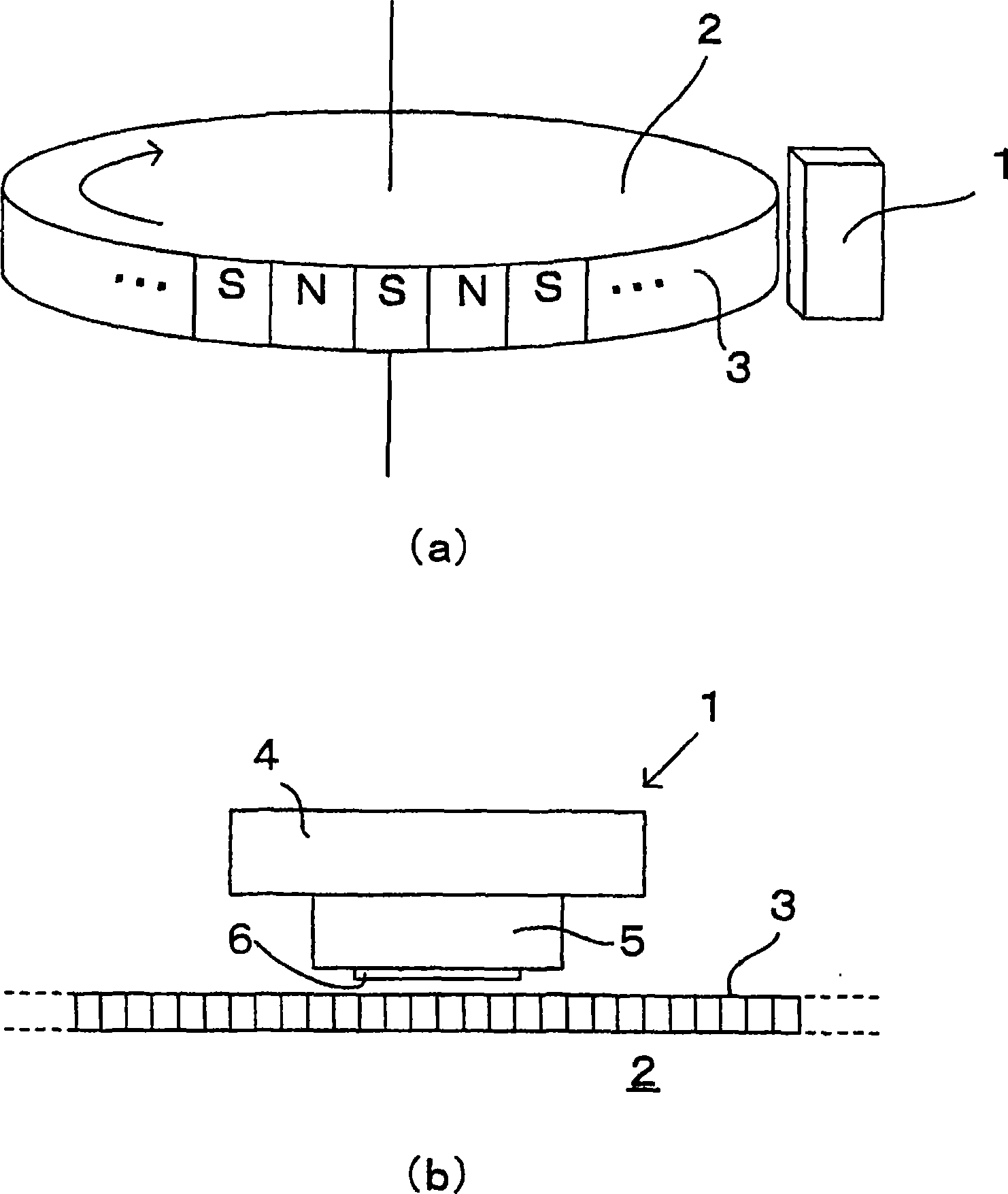Magnetic sensor and its manufacturing method
A magnetic sensor and magnetoresistive technology, applied in the direction of converting the sensor output, the magnitude/direction of the magnetic field, the resistance of the magnetic field control, etc., can solve the problems of manufacturing difficulties, rising manufacturing costs, and narrow spacing of magnetoresistive elements, to prevent spacing The effect of narrowing down, reducing adverse effects, and preventing the decrease in the degree of freedom of arrangement
- Summary
- Abstract
- Description
- Claims
- Application Information
AI Technical Summary
Problems solved by technology
Method used
Image
Examples
Embodiment 1
[0197] First, in Figure 17 In the formation method of the magnetoresistive pattern shown in (a), the signal period λ was set to 0.8 mm, and the output (displacement detection signal) Out was measured. As a result, if the Figure 17 In the method of forming the magnetoresistive pattern shown in (a), not only the 3rd and 5th, as well as the 2nd and 4th harmonic components are all eliminated, but also the interference of the displacement detection signal due to the 12 magnetoresistive elements , the 9th harmonic components are all eliminated, and the 7th harmonic components are reduced by 72%. It is known that if this Figure 17 With the method of forming the magnetoresistive pattern shown in (a), the total distortion up to the 9th harmonic component can be simultaneously reduced.
PUM
 Login to View More
Login to View More Abstract
Description
Claims
Application Information
 Login to View More
Login to View More - R&D
- Intellectual Property
- Life Sciences
- Materials
- Tech Scout
- Unparalleled Data Quality
- Higher Quality Content
- 60% Fewer Hallucinations
Browse by: Latest US Patents, China's latest patents, Technical Efficacy Thesaurus, Application Domain, Technology Topic, Popular Technical Reports.
© 2025 PatSnap. All rights reserved.Legal|Privacy policy|Modern Slavery Act Transparency Statement|Sitemap|About US| Contact US: help@patsnap.com



